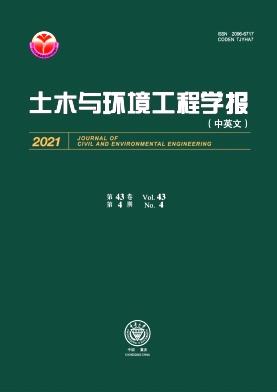建筑框架主动控制中多作动器的优化布置
Q2 Engineering
Tumu yu Huanjing Gongcheng Xuebao/Journal of Civil and Environmental Engineering
Pub Date : 2021-01-01
DOI:10.37421/2165-784X.2021.11.372
引用次数: 0
摘要
驱动器的最佳位置,以获得最佳可能的减少响应是研究人员感兴趣的话题。为了获得响应的最优减量,采用了多种优化技术。在实践中,三个以上的作动器在建筑框架内的放置是困难和繁琐的。因此,在机架中放置的执行器数量一般限制为三个。对于涉及三个作动器的优化问题,涉及许多计算问题,即数值稳定性、解的收敛性、动力不稳定性的可能性以及某些情况下某些响应量的放大。上述问题在许多用于优化的标准优化技术中普遍遇到。此外,对于由于实际原因无法放置致动器的楼层,算法中可能必须施加一些约束。在这种情况下,执行器的最优放置最好采用试验或迭代的方法。本文章由计算机程序翻译,如有差异,请以英文原文为准。
Optimal Placement of Multi Actuators in Active Control of Building Frames
The optimal placement of the actuator for obtaining the best possible reduction in responses was a topic of interest for researchers. Many optimization techniques were used for obtaining the optimal reduction in responses. Placement of more than three actuators in building frame in practice is difficult and cumbersome. As a result, number of actuators to be placed in the frame is generally restricted as three. For optimization problem, involving three actuators, many computational problems are involved, namely, numerical stability, convergence of the solution, possibility of dynamic instability and in some cases, amplification of some response quantities. The above problems are generally encountered in many standard optimization techniques which are used for optimization. Further, some constraints may have to be imposed in the algorithm for floors where actuators cannot be placed for practical reasons. Under such circumstances, optimal placement of actuator is best achieved using the trial or iterative method.
求助全文
通过发布文献求助,成功后即可免费获取论文全文。
去求助
来源期刊

Tumu yu Huanjing Gongcheng Xuebao/Journal of Civil and Environmental Engineering
Engineering-Architecture
CiteScore
1.30
自引率
0.00%
发文量
5346
 求助内容:
求助内容: 应助结果提醒方式:
应助结果提醒方式:


